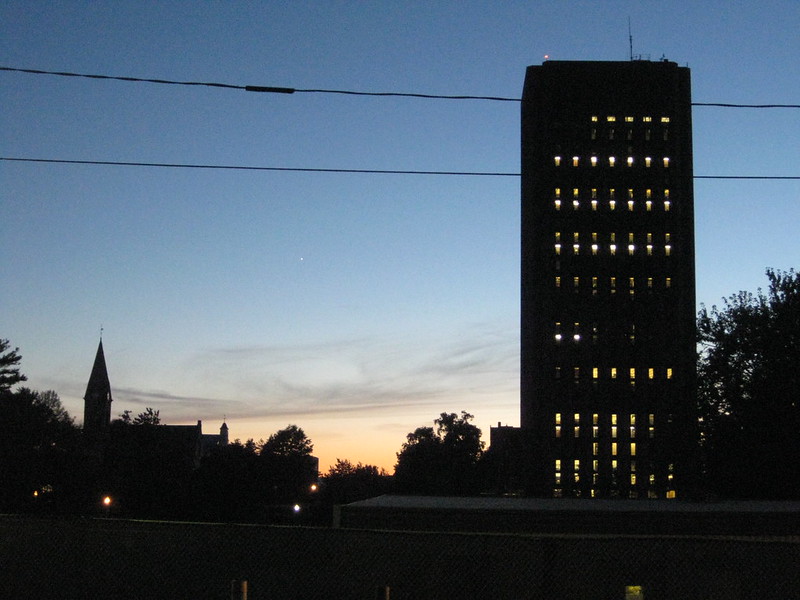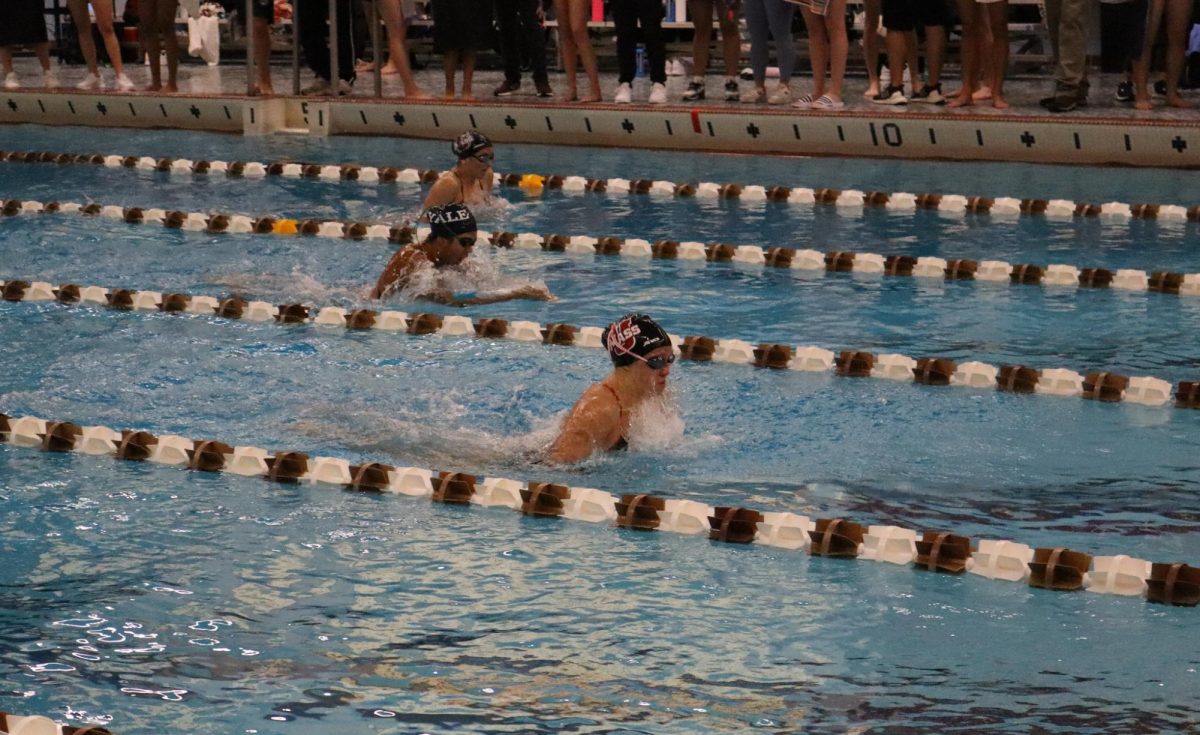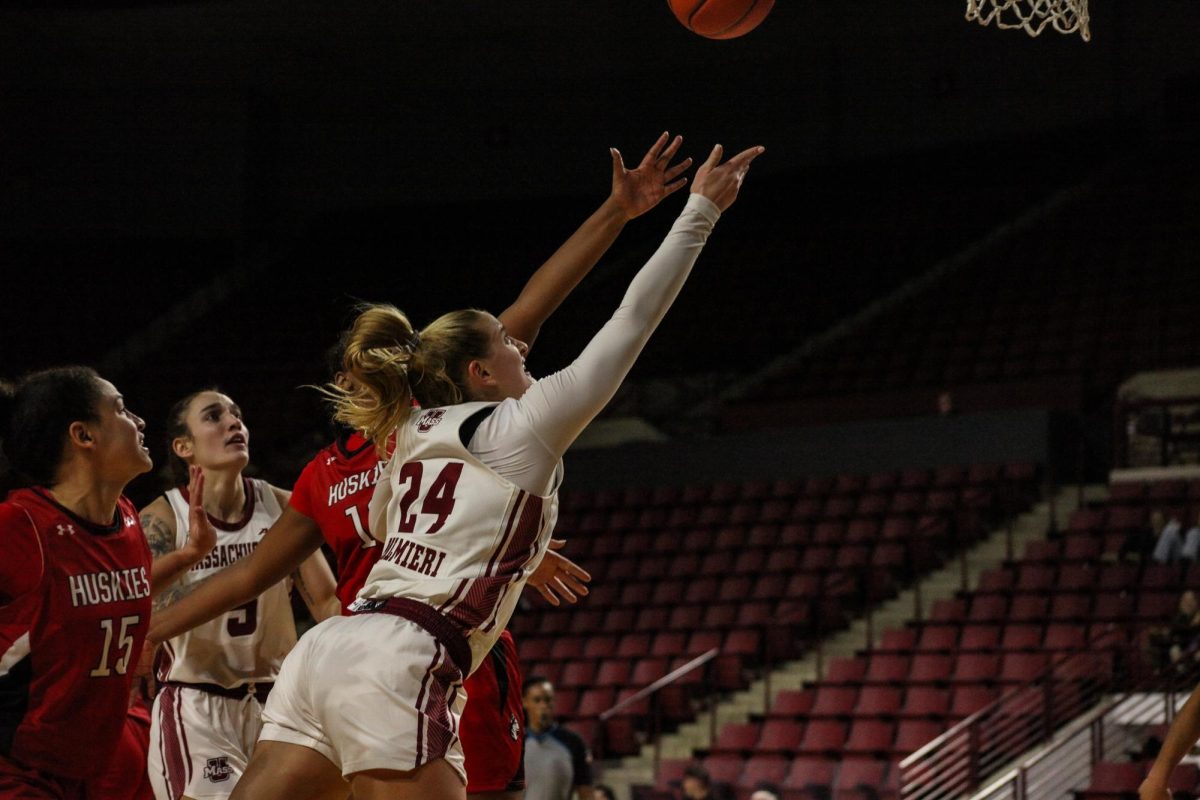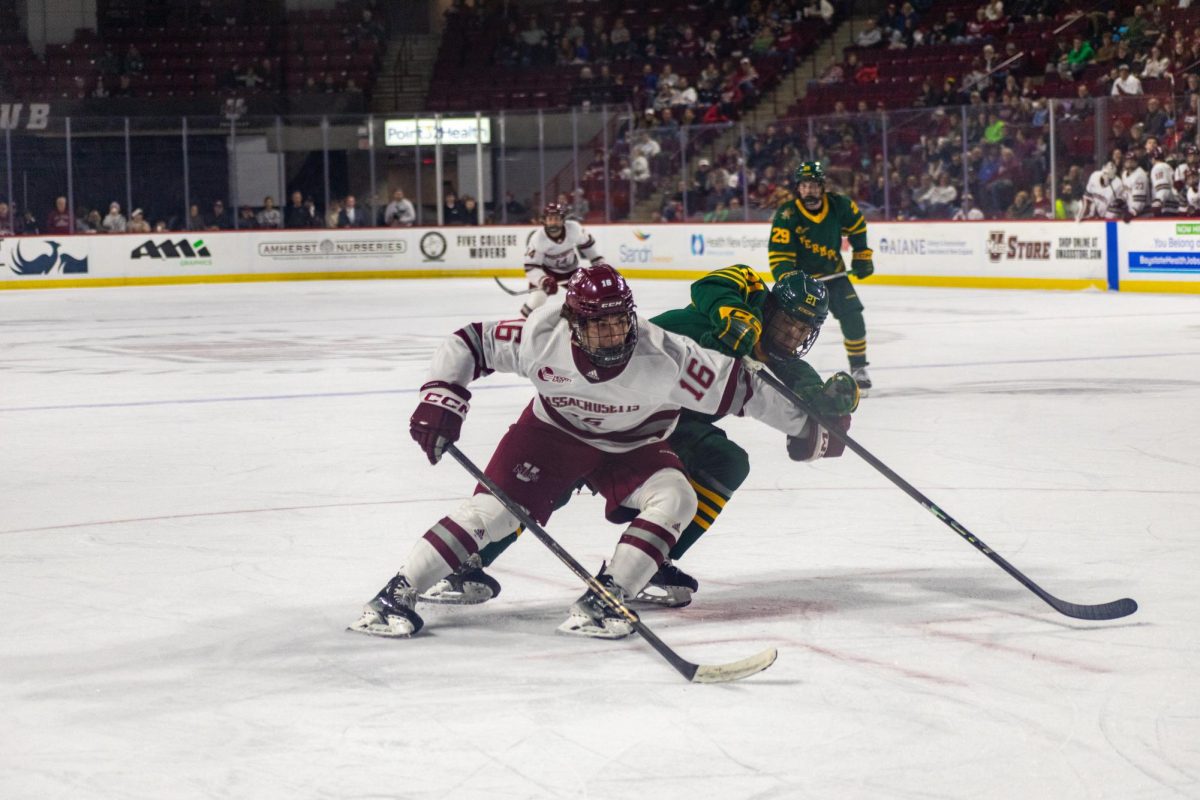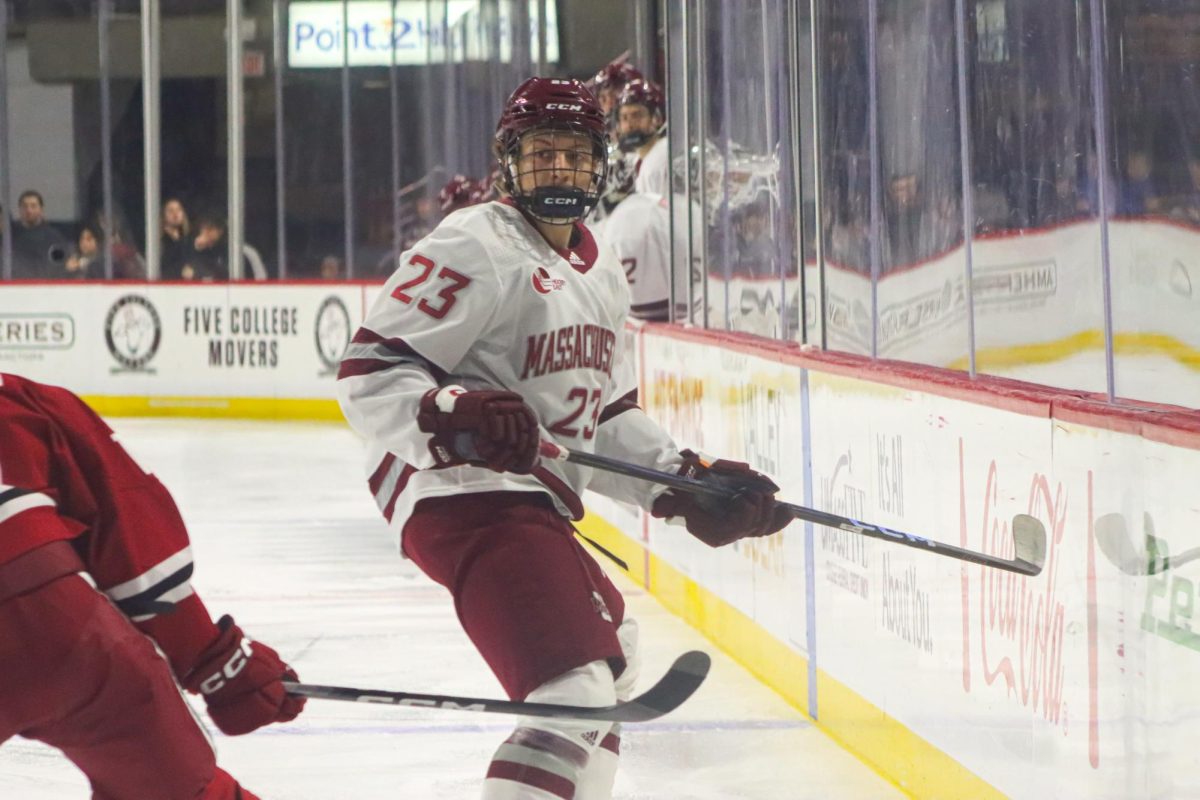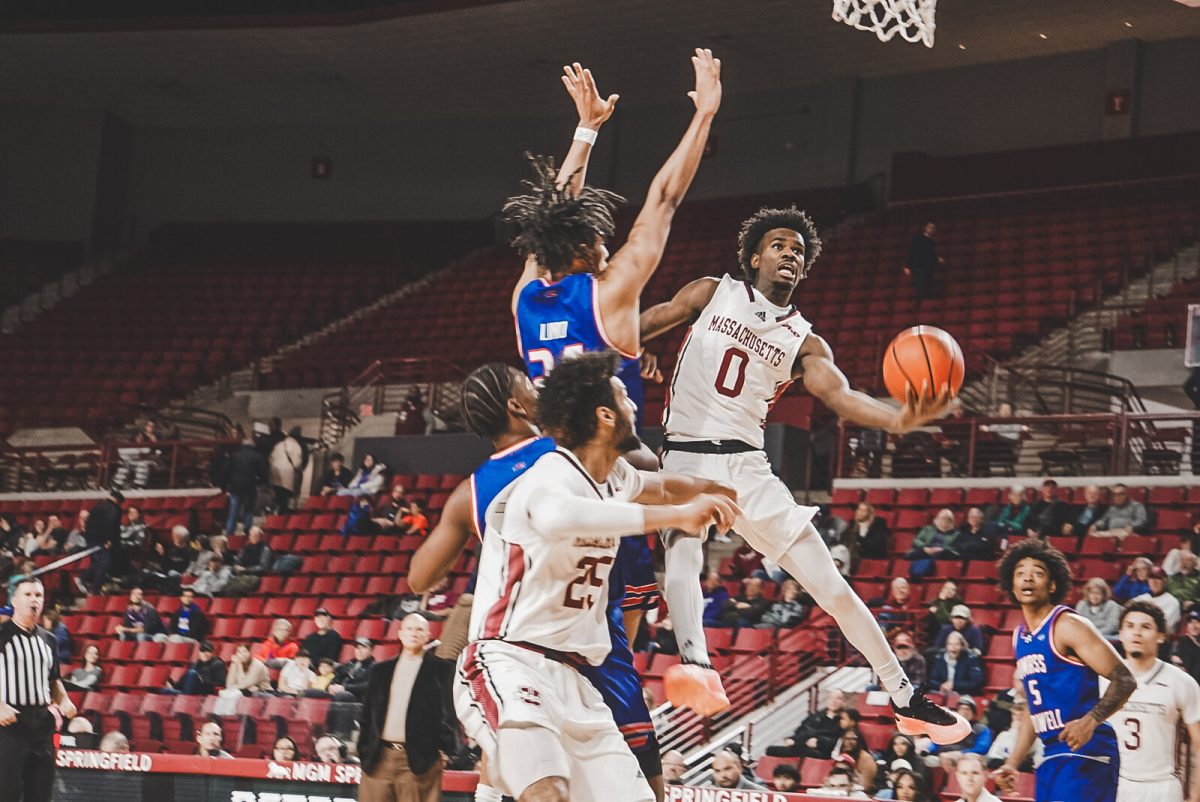On March 28, Designer and artist Chat Travieso spoke at the University of Massachusetts Amherst in a lecture titled “A Nation of Walls,” where he discussed how walls were used historically as both emotional intimidation and physical blockings for segregation throughout the U.S.
The latest installment of the Zube Lecture Series, Travieso explained how his research and work is focused on existing architectural manifestations of racial exclusion. Since beginning his work, he has mapped 30 race barriers across 18 states.
He said the best example of an exclusionary wall, but also a community enforcing racial homogeneity in a neighborhood, is the Liberty Square Housing Authority in Miami, Fla.
The housing authority was the first public housing project for African Americans in the country. They faced severe pushback from white residents in nearby neighborhoods.
“When the initial Black tenants moved into the apartment complex, they not only breached an imaginary racial boundary, they actually crossed a literal concrete wall. What’s more is this wall was planned by the municipal government, supported by the U.S. Housing Authority and designed by an architect,” Travieso said.
He interviewed community members who lived in Liberty Square at the time, who explained that boundaries would be enforced by local police to “ensure that you didn’t exercise your right to go on the white side of town.”
The Liberty Square Wall incited many more physical segregational barriers to be erected in the country, spreading from Texas, to Connecticut, to Detroit. They did not necessarily need to take the form of walls; parks, chain link fences, highways, train tracks, low bridges, one-way streets, misaligned city grids and a lack of sidewalks or crosswalks were all examples of how Black neighborhoods were purposely separated from white neighborhoods.
“In their bluntness and ordinariness, these race barriers or segregation walls tend to hide in plain sight,” Travieso said.
Physical barriers and redlining, Travieso explained, go hand in hand. Neighborhoods that were “tinted red for hazardous,” a lot of the time, had a physical barrier surrounding them.
In 1938, the Federal Housing Association Underwriting Manual stated that “natural or artificially established barriers will prove effective in protecting a neighborhood from adverse influences. Usually, the protection from adverse influences afforded by these means include lower class occupancy and inharmonious racial groups.”
In many cases, residents of the affected neighborhoods protested. State rep. and member of the Detroit Housing Commission Reverend Horace A. Wright said in a newspaper that a concrete wall in Eight Mile Wyoming, Detroit, would be “a serious handicap to the unity that we are striving for. Even in the South, they wouldn’t do anything like that.”
Additionally, there would be alternative routes found or created out of necessity by residents that were closed in by barriers. Pauline Clark, a resident of Booker T. Washington, a historically Black neighborhood in Melbourne, explained that “A ditch runs along the wall, and because the city refused to pave over it and make a sidewalk, we would place wooden boards over the ditch to prevent our shoes from getting wet on our way to school when we were kids.”
A surprising number of barriers remain in these locations today, affecting many generations of Black families across America. In North Brentwood, Md., a 1960s barrier blocked Black residents from crossing into the white section of the neighborhood. If a Black resident were to cross, they would be at risk of violence from the Ku Klux Klan. In North Brentwood, this barrier still remains today.
In Melbourne, Fla., a half-mile concrete wall “continues to block a direct path to the elementary school,” Travieso said. Despite being built in 1959, he explained that “to this day, no school buses come around [there].”
In a 1981 Supreme Court testimony against the City of Memphis, Black Memphis resident N. T. Greene said, “Because we are Black, we cannot drive through a piece of property that is owned collectively by us. This would cause psychological damage to me personally. The Memphis Street closure is simply an extension of the insult and humiliation that we have tolerated and experienced too long already.” This Memphis barricade is also still standing.
Today, some physical barriers that remain are left as historical landmarks, commemorated with plaques or reclaimed with adorning murals. For example, the Booker T. Washington wall in Melbourne has been repainted with celebrated historical Black figures.
However, Travieso understood that community members still feel the effects of the discrimination. “There are limits to what a mural or a plaque can rectify,” he said.
Travieso is hoping to launch his research on an online database mapping the different physical barriers of segregation around the nation. It will allow for community engagement by giving U.S. residents the opportunity to plot places on the map that include these barriers.
Additionally, in 2018, Travieso co-developed a youth education project titled the “Wall (In).” Working with the community members of Liberty City, students studied and researched the history of the Liberty City Wall to “create public art proposals in response to that research, as well as their own personal experiences and connections to the community.”
The reality is that many might not know or understand the history of the architectural surroundings in their communities until it is presented to them, he explained. In creating the online database and working on the youth project, Travieso is hoping to expand that knowledge so people not only understand the history, but also don’t let the past repeat itself.
“The intention for this project was for local youth to be agents of change in their own community, by reclaiming a chapter in history and shaping their surroundings,” Travieso said.
Kavya Sarathy can be reached at [email protected]. Eve Neumann can be reached at [email protected].

